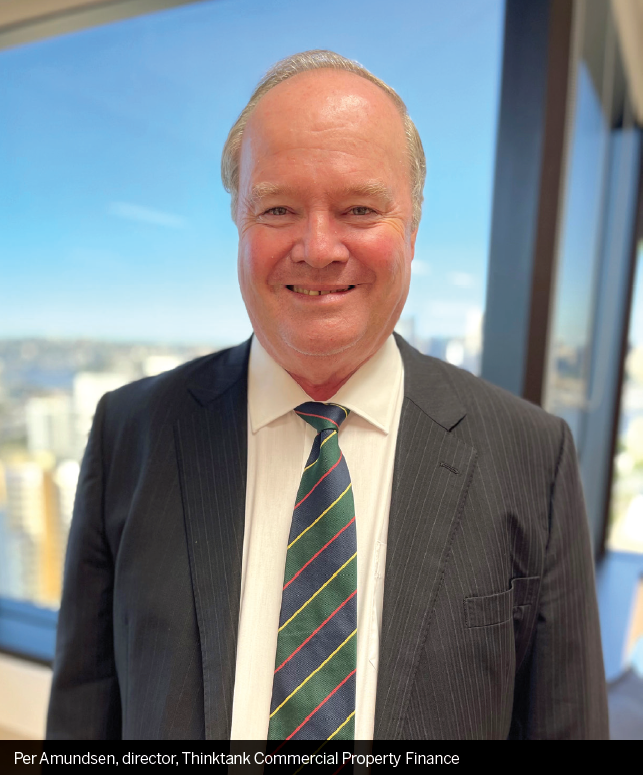

There's no complicated science behind limited recourse borrowing arrangements (LRBAs). Put simply, an LRBA is when an SMSF trustee takes out a loan from a third-party lender, says the ATO. The trustee uses those funds to purchase a single asset or collection of assets to be held in a separate trust.
According to the ATO’s March quarterly statistical report, there are about 1.1 million SMSF members in Australia and 600,000 individual SMSFs in operation, collectively owning nearly $700bn worth of assets. Of the total SMSF investment in property, 65.3% is non-residential and 34.7% residential.
That presents a world of possibilities for mortgage brokers.
“For brokers ready to branch out into SMSF lending, there truly is a world of opportunity – largely because LRBAs offer SMSF customers so many options,” says Liberty group sales manager John Mohnacheff.
 “Recognising the benefits, more business owners are looking to buy their own premises through their SMSF with the help of an LRBA and paying rent directly into their own super fund.
“Recognising the benefits, more business owners are looking to buy their own premises through their SMSF with the help of an LRBA and paying rent directly into their own super fund.
“But you don’t need to own a business to be eligible for an SMSF LRBA. For many SMSFs, purchasing a commercial or residential property with the help of an LRBA is simply a smart investment strategy.
“For brokers, diversifying into SMSF lending can be a great strategy that helps them grow their business and source new referrals. Not only is there a significant market of customers looking for support in this area, but it’s likely that many customers within a broker’s existing database would want to hear more about these lending options.”
Mohnacheff says some brokers hesitate to move into SMSF lending due to its perceived complexity. “The truth is that SMSF lending has more similarities to a standard home loan than many brokers realise.”
Liberty’s SMSF ‘Do More’ sessions provide comprehensive training to bring brokers up to speed and equip them with the tools they need to hit the ground running.
“And, with unmatched SMSF lending experience, our award-winning BDM team can walk you through the entire loan process to ensure you achieve the very best outcome,” Mohnacheff says.
 Thinktank Commercial Property Finance director Per Amundsen says: “A well-connected broker with relationships with SMSF specialist lenders can open up new opportunities for their customers.
Thinktank Commercial Property Finance director Per Amundsen says: “A well-connected broker with relationships with SMSF specialist lenders can open up new opportunities for their customers.
“Brokers can help facilitate many forms of finance for an SMSF, including the purchase of commercial and residential property and the refinance of related-party and third-party LRBAs both for residential and commercial.
“They can also help find solutions to meet GST funding needs for commercial SMSF purchases, as well as assist with structured transactions such as tenants-in-common arrangements with multiple SMSFs.”
Amundsen says typically SMSF transactions are well-performing loans with very low to no arrears and are usually of much longer duration than standard loans – meaning they are quality loans that should stay in place for a long period.
“It’s true some brokers see SMSF LRBAs as time-consuming and difficult. But with the right lending partner, training and guidance, these loans are no more difficult than a standard self-employed or SME loan.”
Amundsen says the tax benefits of SMSFs are considerable, especially in the long term for wealth creation and retirement planning. “The zero tax on property investments is a prime example, whether relating to rental income or capital gains realised on disposal once in pension phase.”
It is important to note that brokers cannot provide financial advice unless they are licensed to do so, Amundsen says.
“But with the correct education they can become a valuable resource to their referral partners and customers in offering various funding solutions available in the market.
“Thinktank provides SMSF accreditation sessions where we cover all aspects of SMSF LRBAs and alternative structures under trust arrangements. These workshops are held on a regular basis, and we encourage any broker seeking to enter the field of SMSF LRBAs to attend these free sessions. Talk to us for more details.”
Liberty’s SuperCredit product enables established SMSFs to leverage the power of their super and invest in either residential or commercial property, says Mohnacheff.
“With LVRs available up to 80% of the property value and no minimum contribution requirements, it’s not surprising Liberty SuperCredit remains the first choice for so many brokers assisting SMSF customers.”
Amundsen says, “Our product range for LRBAs features many of the advantages found in other Thinktank loans, including terms of up to 30 years and interest only for up to five years, depending on the LVR of the LRBA.”
Mohnacheff says that over the last few years Liberty’s loan portfolio has continued to expand at a steady pace.“We’re delighted to support even more Australians to get financial and grow their retirement assets,” he says.
“We’re also noticing an uplift in customers refinancing their existing SMSF loan into a Liberty SuperCredit loan. As more customers look to reap the rewards that SMSF loans can offer and more brokers look to get involved, we’re confident that our SMSF lending arm will continue to thrive.”
Mohnacheff points out that as more customers become aware of the advantages of SMSFs, self-managed funds continue to grow in popularity – and brokers are realising this.
“We are seeing a steadily increasing number of brokers looking to get accredited to better serve this market, and it’s our goal to help business partners find their footing quickly.”
Thinktank sees several factors driving the popularity of investing in direct property through SMSFs, says Amundsen, particularly in using gearing through LRBAs to maximise the investment power of superannuation savings.
“And with interest rates having fallen to the current levels, alternative investments like direct real property are much more popular than was previously the case.
“This is reflected in the growth of property investments in SMSFs generally, and the same holds true for Thinktank. We have continued to see very strong growth, and that’s despite the pandemic where activity was predicted to slow down.“
The other notable aspect of our portfolio’s performance – both SMSF and other borrowers – is the relatively low level of hardships experienced last year and the quickrecovery in the past few months.”
Amundsen says with a number of larger financial institutions withdrawing from SMSF lending, some assumed funding would no longer be available.
“This is obviously not the case. So, in terms of the best referral networks, it’s more about making sure your typical referral network – accountants, financial planners, etc. – are aware of all the SMSF finance solutions and options still available.”
On 1 July 2021, a new law came into effect that increases the maximum number of members SMSFs can have from four to six.
“The move to increase the number of members allowed within an SMSF from four to six will allow more people, usually family members, to pool their retirement savings and provide greater investment opportunities,” Mohnacheff says. “As always, customers must seek professional advice on how to best structure their SMSF.
“With larger groups, we may see some greater administration challenges. Before, it was possible for the one listed director to sign regulatory documents; groups of six will now require at least half of the directors’ or trustees’ signatures. However, it’s worth noting thatmore than 90% of SMSFs currently have just one or two members.”
Amundsen says much of the discussion has centred on adding family members, while previously this was restricted when more than two children were involved.
“Our circumstances are different, with more of our four-member SMSF borrowers being made up of business partners rather than families,” he says.
“We expect this will be an area of new opportunity, where new SMSFs will be formed by three couples who are business partners looking to invest in ‘business real property’ occupied by the business as a tenant.
“The impact of two additional members and their increased contributions starting 1 July 2021 will be quite significant, and we are making preparations for the first enquiries.
“Time will tell, but there is certainly potential now for an increasing number of larger transactions to begin emerging in the new financial year.”

